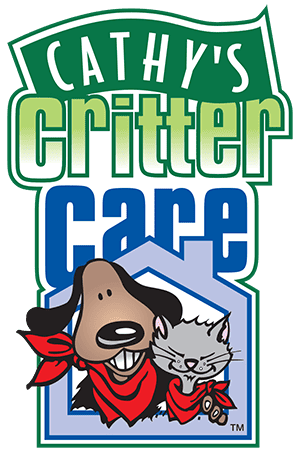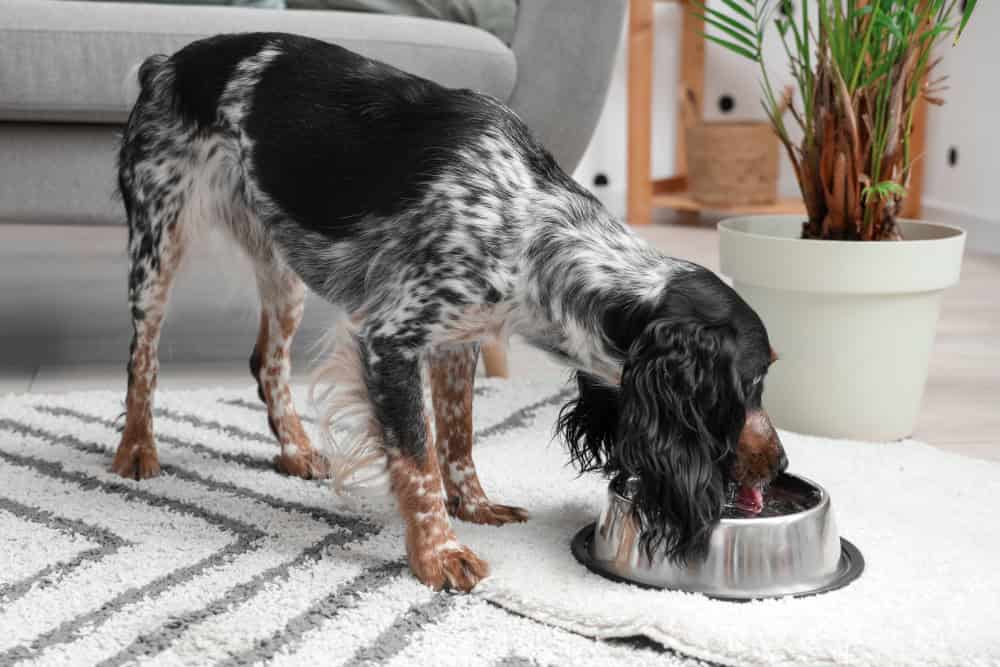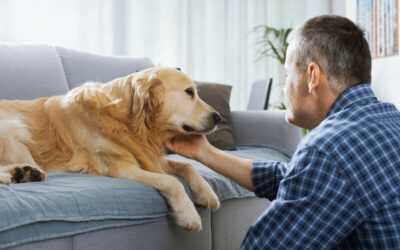Are you considering changing your dog’s food but worried about how it’ll affect their tummy? You’re not alone! Adjusting your dog’s diet can be challenging, but with the right approach, it can go smoothly for both of you.
Whether your dog is dealing with allergies, getting older, or just seems a bit uninterested in their current food, finding the right diet is key to their happiness and health. This guide will walk you through the process step by step, from understanding why a change might be needed to ensuring a smooth transition. So, grab your dog’s bowl and let’s explore the world of pet nutrition together, making mealtime enjoyable and beneficial for your beloved companion.
What is the Proper Way to Switch Your Dog’s Food?
Switching your dog’s food requires a careful and gradual process to ensure the transition is smooth and does not upset your pet’s digestive system. The most important goal when changing your dog’s diet is to prevent gastrointestinal discomfort or other adverse reactions. To achieve this, the transition should ideally be spread over a period of about 7 to 10 days.
Begin by mixing a small amount of the new food with the current food, gradually increasing the proportion of the new food while decreasing the amount of the old food. This slow integration allows your dog’s digestive system to adjust to the new diet without causing distress. Initially, you might start with a ratio of 25% new food to 75% old food for a couple of days.
Monitor your dog’s reaction to the new diet, looking out for any signs of digestive upset such as diarrhea or vomiting. If your dog seems to be adjusting well, you can move to a 50/50 mix of new and old food for another few days, continuing to observe their health and behavior. Following this, if all appears normal, increase the new food to 75% and reduce the old food to 25% for another period before finally switching to 100% new food.
Understanding the search intent and networks of meaning around this topic, it’s clear that pet owners are primarily concerned with the wellbeing of their dogs during a diet change. They seek guidance on executing this transition in a manner that is safe, effective, and minimizes potential health issues. By following the outlined gradual transition process, pet owners can confidently switch their dog’s food, ensuring the dietary change supports their pet’s health and happiness.
Why Switch Your Dog’s Food?
Switching your dog’s food can be necessary for several reasons, each aimed at supporting your pet’s health and happiness. One common reason is allergies or food intolerances, where a dog might react negatively to certain ingredients in their current diet. By changing their food, you can eliminate these adverse reactions and improve their overall well-being.
Another critical transition occurs as dogs age, moving from puppy to adult to senior diets. Each life stage has different nutritional requirements, and adjusting their food ensures they receive the appropriate nutrients. Additionally, dogs with specific health issues may require dietary adjustments to manage or alleviate their condition.
Lastly, dogs, like humans, can experience changes in taste preferences or develop food aversions, necessitating a change in their diet. Understanding these reasons and the underlying search intent shows pet owners’ commitment to ensuring their dogs lead healthy, happy lives through proper nutrition.
Allergies or Food Intolerances
| Common Allergens | Symptoms | Alternative Ingredients |
|---|---|---|
| Chicken | Itching, digestive issues | Lamb, Fish |
| Beef | Skin reactions | Venison, Duck |
| Dairy | Gastrointestinal upset | Plant-based proteins |
| Grains | Itching, ear infections | Grain-free options |
Identifying and eliminating the problematic ingredient can significantly improve their quality of life.
Transitioning from Puppy to Adult to Senior Diets
| Life Stage | Nutrient Adjustments | Examples |
|---|---|---|
| Puppy | Increased protein and calories | Higher protein kibble |
| Adult | Balanced nutrients for maintenance | Adult maintenance formula |
| Senior | Reduced calories, increased fiber | Senior formula with joint support |
Adjusting their food at each life stage ensures they receive the necessary nutrition.
Specific Health Issues Requiring Dietary Adjustments
| Health Condition | Dietary Adjustment | Example Diet |
|---|---|---|
| Pancreatitis | Low-fat diet | Prescription low-fat formula |
| Kidney Issues | Low-protein diet | Renal support diet |
| Obesity | Reduced calorie, higher fiber | Weight management formula |
Consulting with a veterinarian to identify the right diet is important for dogs with health issues.
Changes in Taste Preferences or Food Aversion
Factors like dental health issues or medication can affect taste preferences, necessitating a diet change. Introducing a new food that appeals to their current preferences can help maintain their appetite and nutritional intake.
When to Start the Food Transition?
The right time to start the food transition hinges on recognizing signs that your dog needs a diet change. These signs can include visible health issues like allergies, digestive problems, or changes in weight that are not aligned with their health or age. Additionally, life stage transitions, such as moving from puppyhood to adulthood or into senior years, naturally necessitate a change in diet to meet differing nutritional needs.
Observing your dog’s behavior towards their current food, such as a decreased appetite or reluctance to eat, could also indicate it’s time for a new dietary option. Always consult with a veterinarian to ensure the timing and approach for transitioning your dog’s food are appropriate for their specific health and nutritional requirements.
Signs Your Dog Needs a Diet Change
Recognizing when your dog needs a diet change is important for their health. Look for allergies or skin irritations, which can manifest as excessive scratching or bald patches. Digestive issues, such as frequent vomiting or diarrhea, indicate their current food may not be agreeing with them.
A sudden change in weight, either gain or loss, without a clear reason could also signal the need for dietary adjustment. Additionally, a lack of energy or disinterest in food they previously enjoyed can be a sign that it’s time to reevaluate their diet. Monitoring these signs closely will help ensure your dog remains healthy and happy.
To further enhance the understanding of subtle signs that suggest the need for a dietary review, consider the following examples:
- Subtle Signs for a Diet Change:
- Coat Quality: A slight dullness or increased shedding could indicate nutritional deficiencies or the need for a diet richer in specific nutrients like omega-3 fatty acids.
- Energy Levels: Minor changes in energy, such as less enthusiasm for walks or play, can suggest the current diet might not be meeting your dog’s energy requirements.
- Behavioral Changes: Unusual behaviors, such as increased restlessness or decreased interest in activities they usually enjoy, might be linked to dietary issues.
How to Introduce New Food?
Introducing new food to your dog should be a gradual process to ensure a smooth transition and minimize digestive issues. Start by mixing a small amount of the new food with the current food, gradually increasing the new food’s proportion over 7 to 10 days. This method helps your dog’s digestive system adjust to the new diet.
Initially, aim for a mix of 25% new food and 75% old food, and then adjust the ratios over the following days to 50/50, then 75% new food and 25% old food, until you finally reach 100% new food. Observing your dog’s reaction to the new diet during this period is important; look for any signs of discomfort or digestive upset. If any issues arise, slowing the transition pace or consulting a veterinarian might be necessary.
This careful approach ensures your dog can adapt to their new diet without unnecessary stress or health problems.

Gradually Mix New Food Over 7-10 Days
To ensure a smooth transition to a new diet, gradually mix the new food with your dog’s current food over a period of 7-10 days. Below is a detailed day-by-day guide on how to mix the foods, including specific quantities or percentages to adjust each day.
| Day | New Food (%) | Old Food (%) | Notes |
|---|---|---|---|
| 1-2 | 25 | 75 | Start with a small portion of new food to allow your dog’s digestive system to begin adjusting. |
| 3-4 | 50 | 50 | Increase the new food to an equal ratio with the old food to further adapt to the dietary change. |
| 5-6 | 75 | 25 | Further increase the new food portion, reducing the old food significantly to prepare for the full switch. |
| 7+ | 100 | 0 | Completely switch to the new food if no adverse reactions are observed. |
Increase New Food Percentage Daily
Each day, slightly increase the percentage of the new food while decreasing the amount of the old food. The table above provides a clear, step-by-step breakdown of how to increase the new food percentage. During this transition, it’s important to look for signs of readiness to proceed to the next step, such as:
- No signs of digestive discomfort (e.g., vomiting, diarrhea)
- Continued eagerness to eat
- Normal energy levels and behavior
If any adverse reactions are observed, consider slowing the transition pace or reverting to the previous mix ratio until your dog adjusts. Consulting a veterinarian may be necessary if issues persist.
Signs of a Successful Food Switch
A successful food switch is indicated by several positive signs in your dog’s health and behavior. Key indicators include stable digestion and regular bowel movements, showing that your dog’s digestive system is adapting well to the new diet. Another sign is an increase in vitality and activity levels; a diet that suits your dog will provide them with the energy they need to be active and healthy.
Additionally, a shiny coat and healthy skin are visual cues of a nutritious diet that meets your dog’s needs. These signs collectively demonstrate that the new food is positively impacting your dog’s overall well-being and nutritional status.
Stable Digestion and Regular Bowel Movements
| Indicator | Description | Notes |
|---|---|---|
| Consistency | Stools should be firm and hold their shape. | Soft, watery, or extremely hard stools can indicate dietary issues. |
| Frequency | Typically, 1-2 bowel movements per day. | Depends on the dog’s size, diet, and activity level. |
| Color | Consistent brown color. | Sudden changes in color should be monitored. |
Increased Vitality and Activity Levels
| Indicator | Description | Notes |
|---|---|---|
| Energy Levels | Increased willingness to engage in play and exercise. | Compare to the dog’s activity levels before the diet change. |
| Behavior | Alertness and eagerness to participate in daily activities. | A noticeable change from previous lethargy or disinterest. |
Shiny Coat and Healthy Skin
| Nutritional Component | Benefit | Notes |
|---|---|---|
| Omega-3 Fatty Acids | Contributes to a shiny coat and healthy skin. | Found in fish oils and flaxseed. |
| Vitamins A and E | Supports skin health and fur quality. | Ensure the new diet includes these vitamins. |
| Protein Quality | High-quality proteins support skin regeneration and fur strength. | Look for diets with named meat sources as primary ingredients. |
Monitoring Your Dog’s Adaptation
Monitoring your dog’s adaptation to a new diet is important to ensure they are benefiting from the change. Daily observation of eating habits helps identify how well your dog accepts the new food. Checking for signs of allergies or discomfort, such as skin irritations or digestive upsets, is necessary to assess if the diet suits their health needs.
Additionally, weight monitoring plays a key role in identifying over or underfeeding, allowing adjustments to be made to maintain the best health. This careful monitoring ensures the dietary switch supports your dog’s well-being, allowing for timely interventions if needed.
Daily Observation of Eating Habits
Daily observation of eating habits is key to understanding how well your dog is adapting to the new diet. Note changes in appetite, feeding speed, and eagerness to eat. This can provide early indications of acceptance or issues with the new food.
Checking for Signs of Allergies or Discomfort
It’s important to check for signs of allergies or discomfort, including skin irritations, excessive scratching, or digestive issues like vomiting or diarrhea. These symptoms can signal that the new diet may not be suitable for your dog’s specific health needs.
Weight Monitoring for Over or Underfeeding
Weight monitoring is essential to ensure your dog maintains a healthy weight during the transition to a new diet. Regular checks can help identify if your dog is being overfed and gaining unnecessary weight, or underfed and losing weight, allowing for timely dietary adjustments.
| Activity | Details | Frequency |
|---|---|---|
| Eating Habits Observation | Note times of meals, amount consumed, changes in appetite or eagerness to eat. | Daily |
| Signs of Allergies or Discomfort | Check for hives, swelling, excessive gas, vomiting, diarrhea. | As symptoms appear |
| Weight Monitoring | Weigh your dog to ensure they are not gaining or losing too much weight. | Weekly |
Managing Adverse Reactions to New Food
When introducing new food to your dog, vigilance for any adverse reactions is key. Immediate action is necessary if your dog exhibits signs of digestive distress or allergic reactions. Below are steps and alternative food suggestions to manage such situations effectively.
Immediate Return to the Original Diet
If adverse reactions occur, immediately returning to the original diet can help stabilize your dog’s health. This step is important to alleviate any symptoms caused by the new food and ensure your pet returns to a state of normalcy before any further dietary changes are attempted.
Slow Reintroduction of the New Food
After stabilization on the original diet, a slow reintroduction of the new food may be considered. Begin with very small amounts mixed into their regular food, gradually increasing the proportion over time. This careful, monitored approach allows you to gauge how your dog reacts to the new diet and halt the process if adverse reactions reappear.
Alternative Food Suggestions
If your dog continues to experience issues despite a slow reintroduction, exploring alternative food suggestions becomes necessary. Consulting with a veterinarian can provide insights into other diet options more suitable for your dog’s specific health needs and tolerances.
| Step | Action | Purpose |
|---|---|---|
| 1 | Return to Original Diet | Stabilize your dog’s health by eliminating the new food causing distress. |
| 2 | Monitor for Improvement | Ensure symptoms of distress resolve before attempting any new food introduction. |
| 3 | Slow Reintroduction | Start with a small amount of new food (5-10%) mixed with the original diet, gradually increasing over 2-3 weeks. |
| 4 | Observe and Adjust | Carefully monitor your dog’s reaction to the new food. If adverse reactions reappear, consider halting the reintroduction. |
| 5 | Consult a Veterinarian | If issues persist, seek professional advice for alternative food options that may be more suitable. |
| 6 | Selecting Alternative Food | Choose a limited ingredient diet or a novel protein source to minimize the risk of adverse reactions. |
Regular Evaluation of Dietary Needs
Regularly evaluating your dog’s dietary needs is important for their long-term health and well-being. This involves annual vet check-ups where dietary recommendations can be updated based on your dog’s health status, age, and activity level. It’s also important to adjust for lifestyle changes, such as increased or decreased activity, which can affect your dog’s nutritional requirements.
Additionally, as your dog ages, recognizing signs of aging and adjusting their diet accordingly can help manage age-related conditions and maintain their quality of life. This proactive approach ensures your dog’s diet evolves with their changing needs, supporting optimal health throughout their life stages.
Annual Vet Check-Ups for Dietary Recommendations
Annual vet check-ups are essential for tailoring dietary recommendations to your dog’s evolving health needs. These visits allow professionals to assess your dog’s condition and suggest nutritional adjustments based on age, health status, and specific requirements, ensuring their diet supports overall well-being. Blood work and other tests can inform about deficiencies or excesses in nutrients, guiding a more precise dietary plan.
Adjusting for Lifestyle Changes
Adjusting for lifestyle changes is important in maintaining your dog’s health. Changes in activity levels, whether due to a more sedentary lifestyle or increased exercise, necessitate modifications in their diet to meet new energy demands and prevent issues like weight gain or loss. For example, a move to a new home with more yard space for exercise might mean your dog needs more calories and protein to fuel their increased activity.
Conversely, a dog that starts spending more time indoors may require fewer calories to avoid weight gain.
Recognizing Signs of Aging and Adjusting Diet Accordingly
As dogs age, their dietary needs change. Recognizing signs of aging and adjusting their diet accordingly can help manage age-related health issues and maintain quality of life. Common age-related conditions include arthritis, which may benefit from diets enriched with omega-3 fatty acids to reduce inflammation, or cognitive decline, where antioxidants and specific fatty acids might support brain health.
Incorporating foods that support joint health, digestion, and cognitive function, tailored to your senior dog’s specific needs, can significantly enhance their comfort and vitality in their later years.




